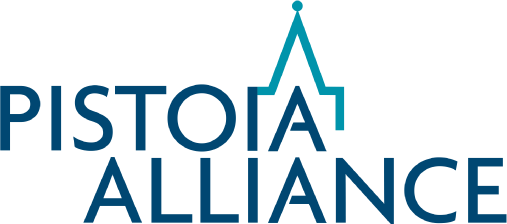Global collaborative project delivers toolkit to promote best practice and accelerate productivity; conference to be held in May 2018 will showcase importance of user experience design
London, February 13, 2018: The Pistoia Alliance, a global, not-for-profit alliance that works to lower barriers to innovation in life sciences R&D has today announced the launch of the User Experience (UX) for Life Sciences (LS) Toolkit, to help life science companies improve UX in line with other global industries. The UXLS toolkit marks the culmination of a collaborative project involving more than 50 UX specialists from 20 different organisations across the world; including several top ten pharmaceutical companies, bioscience, and technology firms. The toolkit contains UX case studies, methods, and metrics – enabling life science companies to design better, more intuitive, more usable digital products, specifically for R&D in the life science and healthcare environment. These issues and the benefits of UXLS for improving productivity will be discussed further at The Pistoia Alliance’s User Experience for Life Science conference on the 14-15th May 2018 in Boston, USA, featuring keynote speakers from companies including Novartis.
“In today’s world, software is the gateway to unlocking the many zettabytes of data that humans produce. When scientific software is poorly designed, it is frustrating and time-consuming to use, and adds yet another barrier to the acceptance and adoption of new digital technologies, such as automation and Artificial Intelligence. This has the cumulative effect of making drug discovery and development far less efficient and productive,” commented Dr Steve Arlington, President of The Pistoia Alliance. “As we become more familiar in our personal lives with digital technologies that interact intuitively and respond to our needs, the desire for technology that ‘just works’ in our professional lives is also growing. The potential for good UX design to impact life science R&D is significant – from improving the UX of clinical trials and making it easier for patients to participate, to delivering cutting-edge UX design that supports the ‘laboratory of the future’. UX design should not be considered a remote or niche area, and we hope that our UXLS toolkit enables more companies to realise this potential.”
The UXLS project was formed by The Pistoia Alliance in recognition of the fact that many life science organisations are behind the curve when it comes to UX. Although UX principles are widely recognised and have been applied successfully in other industries, such as retail and financial services, adoption and use in life science is low. Members of The Pistoia Alliance communicated this issue, and the UXLS project began as a result in early 2017. The project empowers life science professionals to realise the benefits that UX design can deliver through engagement with a wider audience, including stakeholders in senior management. The global UXLS project team worked collaboratively to develop the toolkit which provides a ‘how-to’ that helps businesses adopt UX principles and methods as they develop scientific software.
“At EMBL-EBI, we have a mandate to share data from life science experiments, and put a lot of energy into helping people make the best possible use of it,” says Professor Ewan Birney, Director of the European Bioinformatics Institute. “We experienced a big change when we re-focussed the development of our services and started to adopt a user-centred design process. We benefited from doing user research, prototyping, design and testing to get to the heart of the problem and deliver products and services that are intuitive for researchers. I was initially sceptical, but then I was impressed to see the results across our organisation.”
The UXLS toolkit so far contains six case studies from organisations such as Novartis, EMBL-EBI, and AstraZeneca; 10 published methods, such as interactive prototyping and usability testing; meaningful principles that will assist and explain activities to better a system or process. The toolkit will be beneficial for UX practitioners, bioinformaticians, software developers, and technical and IT managers. The UXLS conference will be hosted by Novartis at the Novartis Institutes for BioMedical Research (NIBR). Pat Keller, Global Head of User Experience at NIBR will deliver a keynote speech at the conference, which will also feature several ‘hands on’ UX workshops.
For more information on the UXLS project and toolkit, please visit: http://www.pistoiaalliance.org/projects/uxls/ and http://uxls.org.
For more information on the UXLS conference, please visit: http://www.pistoiaalliance.org/eventdetails/user-experience-life-science-conference/.
— ENDS –
About The Pistoia Alliance
The Pistoia Alliance is a global, not-for-profit members’ organization made up of life science companies, technology and service providers, publishers, and academic groups working to lower barriers to innovation in life science and healthcare R&D. It was conceived in 2007 and incorporated in 2009 by representatives of AstraZeneca, GSK, Novartis and Pfizer who met at a conference in Pistoia, Italy. Its projects transform R&D through pre-competitive collaboration. It overcomes common R&D obstacles by identifying the root causes, developing standards and best practices, sharing pre-competitive data and knowledge, and implementing technology pilots. There are currently over 80 member companies; members collaborate on projects that generate significant value for the worldwide life sciences R&D community, using the Pistoia Alliance’s proven framework for open innovation.
About the European Bioinformatics Institute (EMBL-EBI)
The European Bioinformatics Institute (EMBL-EBI) is a global leader in the storage, analysis and dissemination of large biological datasets. We help scientists realise the potential of ‘big data’ by enhancing their ability to exploit complex information to make discoveries that benefit humankind. We are at the forefront of computational biology research, with work spanning sequence analysis methods, multi-dimensional statistical analysis and data-driven biological discovery, from plant biology to mammalian development and disease. We are part of EMBL and are located on the Wellcome Genome Campus, one of the world’s largest concentrations of scientific and technical expertise in genomics. Website: www.ebi.ac.uk
